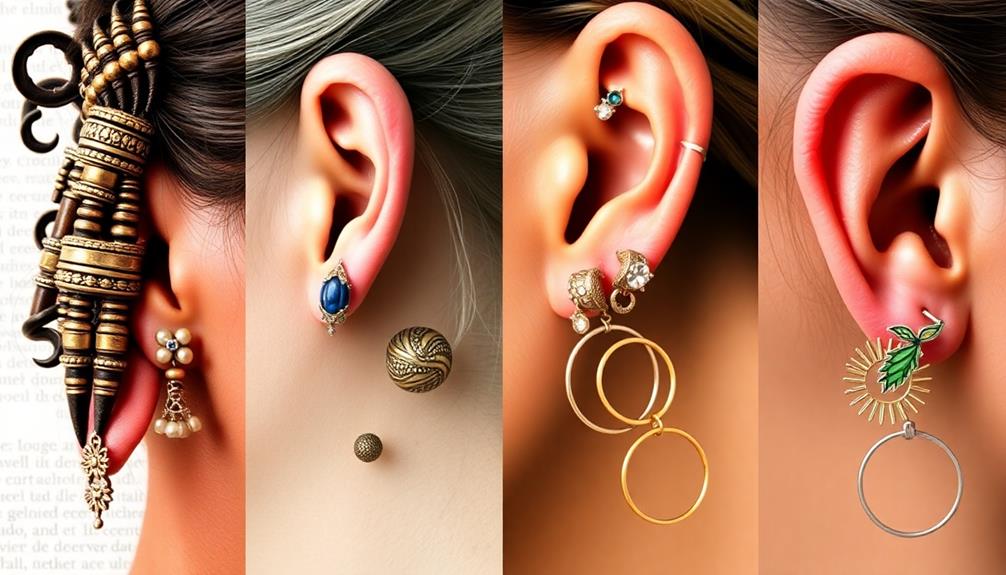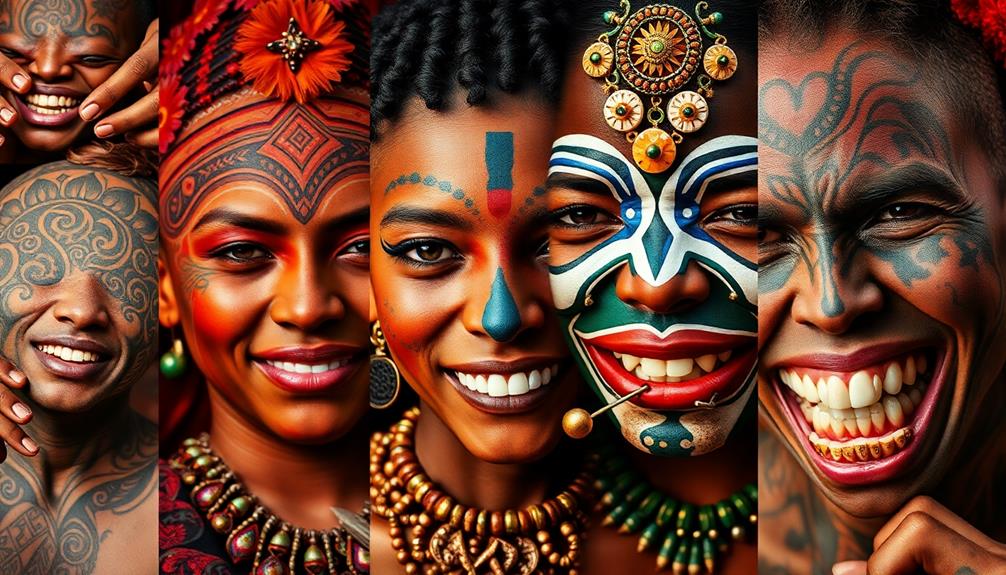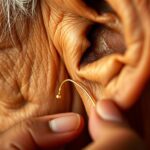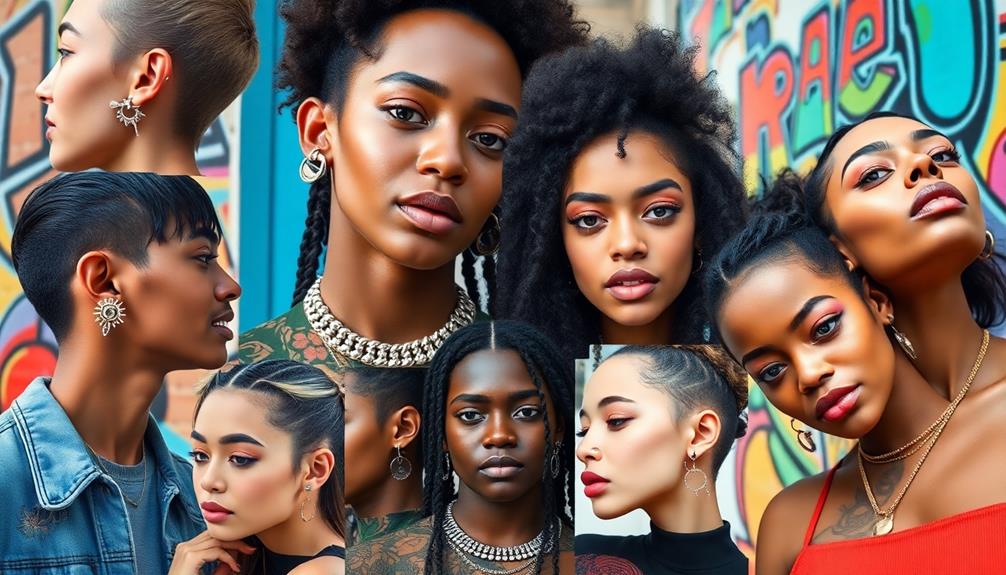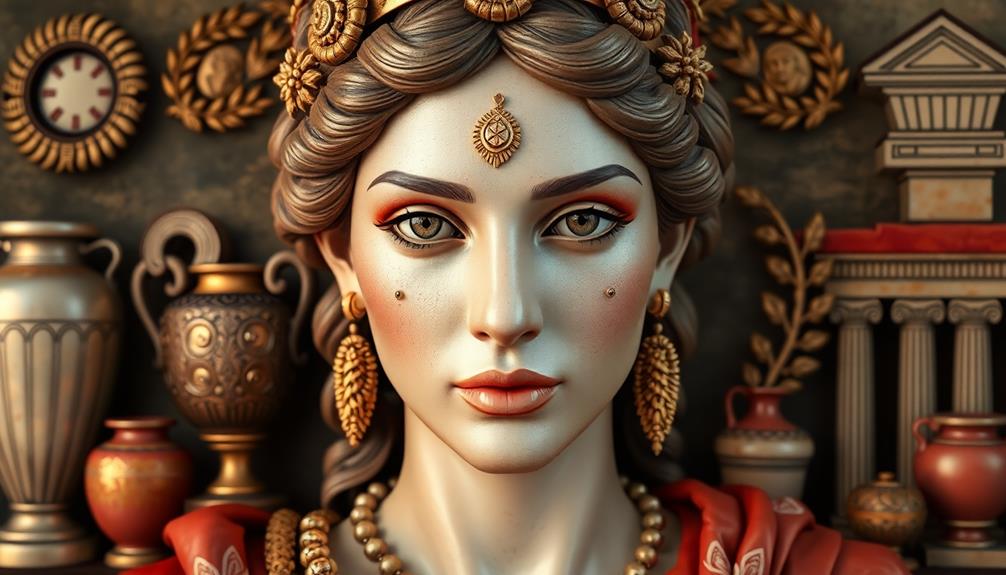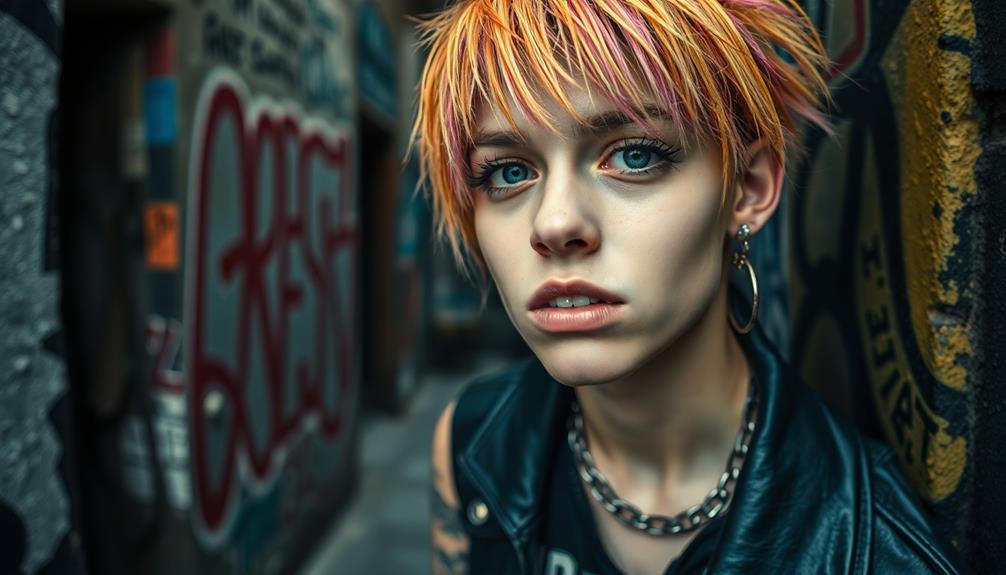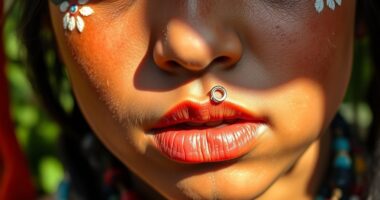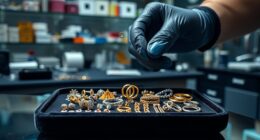Ear piercings have evolved remarkably over the centuries. Initially, they symbolized wealth and status in ancient Egypt and served spiritual purposes in various cultures. As societal norms shifted, ear piercings became rites of passage in tribal communities, marking changes into adulthood. Modern techniques now emphasize safety, with sterile tools and professional services ensuring better healing. Today, piercings express individuality, from simple lobe holes to intricate curated ear designs. You might be surprised by how much the practices and meanings continue to change. There's still more to uncover about the rich history and current trends in ear piercings.
Key Takeaways
- Ear piercing dates back over 5,000 years, with historical evidence found in ancient cultures like Egypt and tribal societies.
- Traditional methods used improvised tools, while modern practices employ sterile needles and professional techniques for safety and hygiene.
- Ear piercings have evolved from symbols of status and spirituality in ancient civilizations to personal expression and fashion statements in contemporary society.
- The rise of professional piercing shops in the 1980s transformed piercing practices, prioritizing health and aftercare knowledge.
- Contemporary trends favor minimalist designs and curated aesthetics, showcasing personal style through multiple piercings and unique jewelry combinations.
Historical Evidence of Ear Piercing
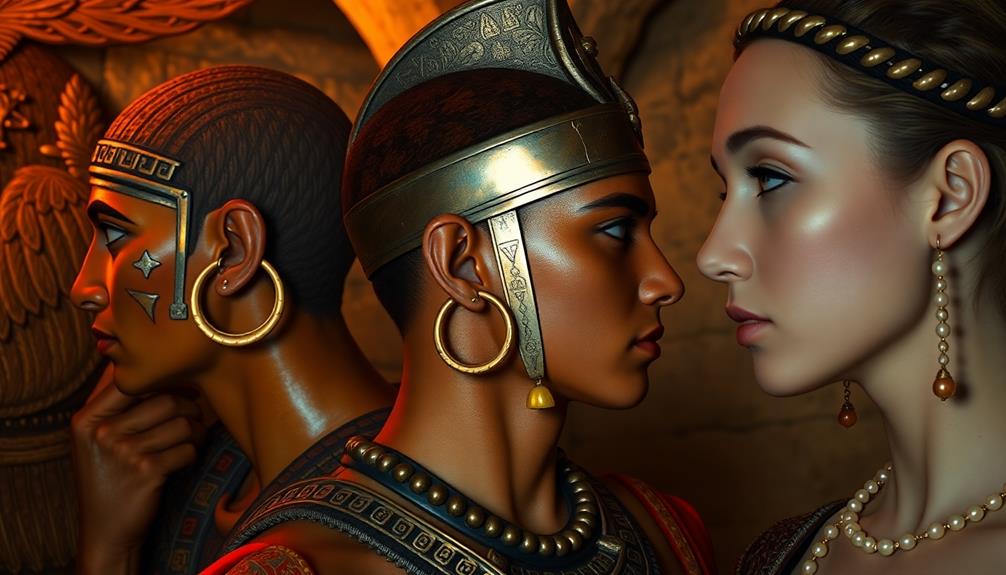
Ear piercing has been a common practice across cultures for thousands of years. You might find it fascinating that historical evidence of ear piercing dates back approximately 5,000 years. For instance, the remains of Ötzi the Iceman, who lived in the 4th millennium BCE, show that he'd pierced ears.
This ancient practice wasn't limited to Europe; it was prevalent in ancient Egypt as well. King Tutankhamun's tomb revealed earrings that symbolized status and wealth, highlighting how ear piercing experienced significance in various societies.
Biblical references in the Old Covenant connect ear piercing to themes of slavery and obedience, illustrating its cultural significance in those times. Additionally, tribal cultures, like the Maasai and Dayak, incorporated ear piercing into rites of passage, marking pivotal changes such as puberty and adulthood.
It's intriguing to see how ear piercings have also been used to ward off evil spirits or signify bravery in diverse cultures. This rich historical tapestry shows that ear piercing isn't just a modern trend; it's an enduring practice with deep-rooted significance across civilizations.
Cultural Significance of Ear Piercing
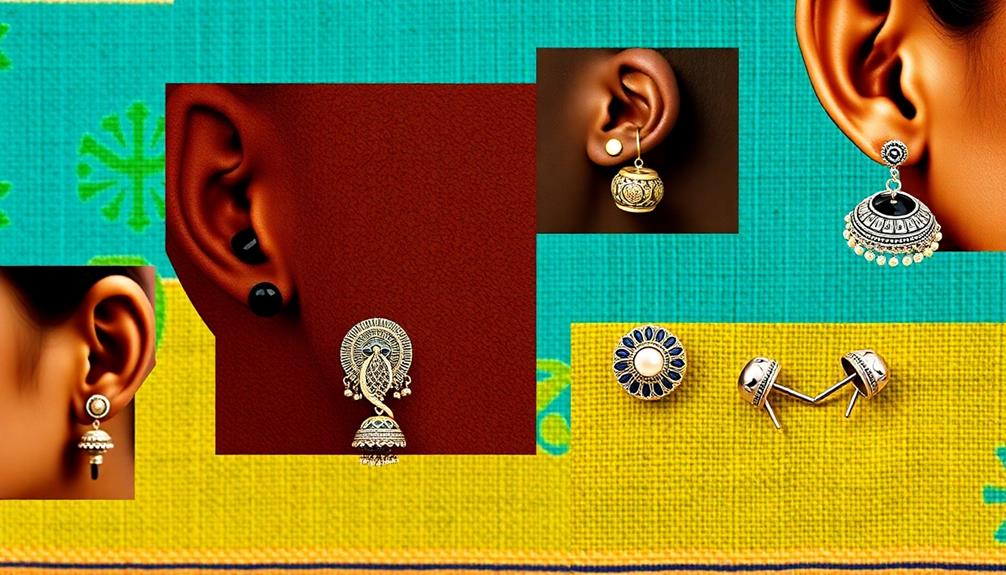
Ear piercing isn't just a fashion statement; it carries deep cultural significance across various societies.
For many, it marks important life changes, like puberty or rites of passage, while also serving as symbols of identity and status.
Additionally, in some cultures, these piercings are intertwined with spiritual beliefs, reinforcing the connection between personal expression and community heritage.
Puberty and Rites of Passage
Throughout various cultures, ear piercing acts as a significant rite of passage, marking the transformation from childhood to adulthood. For many, this event coincides with puberty, symbolizing growth and newfound responsibilities.
Take the Samburu people of Kenya, for example; their ear piercings signify bravery and manhood, serving as a powerful cultural statement. Similarly, in Borneo, parents traditionally pierce their child's ears to highlight their dependency, strengthening family ties through this meaningful act.
The Maasai tribe also showcases the cultural significance of ear piercings, particularly for women evolving into adulthood. For them, these piercings represent beauty and social status, deeply woven into their identity.
In some Indigenous cultures in North America, ear piercing rituals occur during puberty ceremonies, adding spiritual and communal importance to the practice.
Across the globe, the belief that pierced ears allow evil spirits to escape further enhances the cultural significance of this rite of passage. Each piercing tells a story, not just of personal growth, but of the rich traditions and values that shape communities.
Embracing this ritual connects you to a long history of cultural identity and familial bonds.
Spiritual and Cultural Beliefs
Cultural beliefs surrounding ear piercing often intertwine with spiritual practices, reflecting the deep significance these adornments hold within various societies. In ancient cultures, ear piercings served not only as aesthetic choices but also as spiritual and protective symbols.
For instance, many believed that these piercings allowed evil spirits to escape, safeguarding individuals from harm. Additionally, similar to how individuals with BPD often experience intense emotional responses, the significance of ear piercings can evoke strong feelings tied to cultural identity and personal evolution.
Here are three key cultural beliefs associated with ear piercings:
- Rites of Passage: In the Samburu culture of Kenya, ear piercings signify bravery and manhood, marking a significant change for young men into adulthood.
- Dependency and Growth: Among the Dayak people of Borneo, parents traditionally pierce their children's ears to symbolize their dependency and their journey into adulthood.
- Cultural Identity: The Maasai community uses ear piercings in rituals that reinforce cultural identity and strengthen communal ties, marking the shift from childhood to adulthood.
These examples highlight how ear piercings are more than mere fashion statements; they embody beliefs that shape cultural identity and connect individuals to their spiritual heritage across ancient cultures.
Symbols of Identity and Status
How do symbols of identity and status manifest through ear piercings across different societies? Throughout history, ear piercings have been powerful symbols of identity and status. In ancient civilizations, such as the Egyptians and Romans, elaborate earrings signified wealth and nobility.
You'd find gold and precious stones adorning the ears of the elite, showcasing their social standing and economic power.
In tribal cultures, ear piercings often represent rites of passage and bravery. For instance, in the Samburu culture, these piercings mark the shift from childhood to adulthood, embodying resilience and courage.
Similarly, among the Maasai and Dayak communities, ear piercings carry spiritual significance, believed to connect individuals to their cultural identity while also allowing evil spirits to escape.
Today, while modern interpretations of ear piercings emphasize personal expression and individuality, they still echo the historical significance of status.
You might choose to wear specific styles or materials to convey your identity, linking you to centuries of tradition.
Ultimately, ear piercings remain a fascinating intersection of personal and cultural identity, reflecting both ancient customs and contemporary trends.
Evolution of Piercing Practices
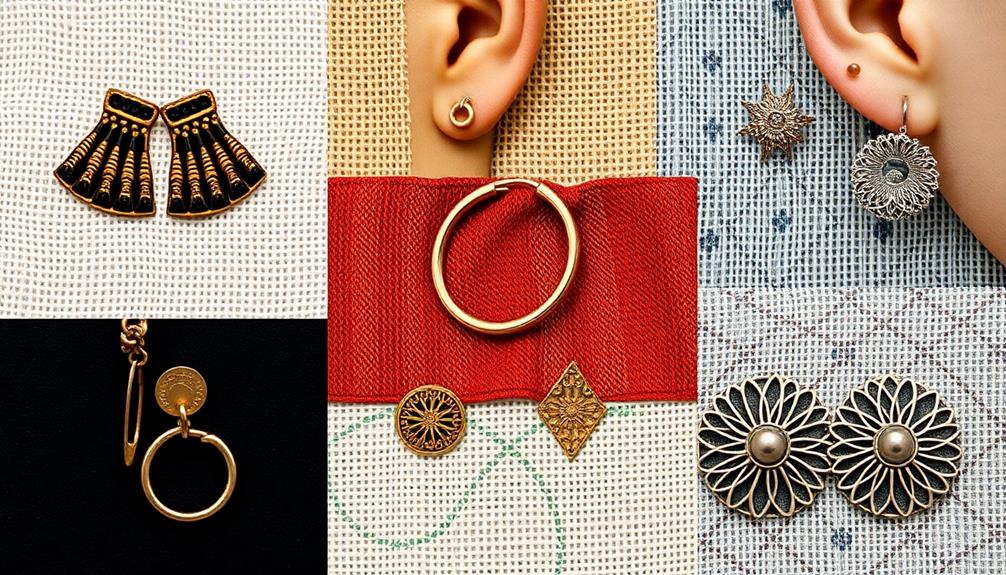
As you explore the evolution of ear piercing practices, you'll notice how historical rituals transformed into modern techniques.
What once held deep cultural significance has now shifted towards personal expression and style.
This journey reflects broader societal changes and trends that continue to influence how we adorn our bodies today.
Historical Practices and Rituals
Ear piercing practices have evolved considerably over the centuries, reflecting various societal beliefs and traditions. This rich history showcases how different cultures have embraced ear piercings as symbols of identity and status.
You might find it fascinating to learn about a few key historical practices and rituals:
- Ancient Symbolism: In ancient Egypt and the Indus Valley, ear piercings signified wealth and spirituality, often adorned with intricate jewelry.
- Rites of Passage: In tribal cultures like the Samburu, ear piercings marked significant milestones, such as the change to adulthood, where they represented bravery and manhood.
- Sailor Traditions: During the 16th century, European sailors adopted ear piercings not only as a travel symbol but also believed these piercings could enhance eyesight and provide burial protection.
As you explore the types of ear piercings throughout history, it's evident that these practices were deeply rooted in cultural significance.
From ancient rituals to the emergence of professional piercing shops in the 1980s, the evolution of ear piercings continues to reflect changing societal attitudes toward body modifications and personal expression.
Transition to Modern Techniques
The shift from traditional to modern ear piercing techniques has transformed how people approach this age-old practice. Gone are the days of improvised tools and risky methods; instead, you now have access to professional piercing shops that prioritize safety and hygiene. Modern techniques primarily utilize sterile needles, minimizing the risk of complications that were common in earlier methods.
Here's a quick comparison of traditional and modern practices:
| Traditional Methods | Modern Techniques |
|---|---|
| Improvised tools (e.g., sewing needles) | Sterile needles |
| Home piercing | Professional piercing shops |
| Healing times varied | Optimized healing processes |
| Piercing guns used | Medical-grade equipment |
| Limited aftercare knowledge | Advanced aftercare knowledge |
With the rise of trained professionals, the healing process for typical earlobe piercings now generally takes 4-6 weeks, while cartilage piercings require at least 3 months. This evolution not only guarantees better outcomes but also reflects a commitment to the safety of all individuals, particularly those at risk. Today, you can confidently enjoy your ear piercings knowing that the techniques have greatly improved.
Cultural Significance and Trends
Throughout history, people across cultures have used ear piercing as a powerful form of expression. The cultural significance of ear piercings varies widely, evolving from ancient practices that indicated status or spirituality to contemporary trends celebrating individuality and body modification.
As you reflect on this evolution, consider the following key points:
- Cultural Significance: Different societies have historically used ear piercings for rites of passage, religious rituals, or to denote social standing.
- Fashion Trends: The 1960s and 70s ushered in a counterculture movement, transforming ear piercings into symbols of rebellion against societal norms. Today, minimalism reigns supreme, with tiny studs and curated ear styles dominating the scene.
- Health and Safety: Modern practices emphasize safety, as trained professionals now perform piercings under strict sterilization protocols, ensuring a safer experience for everyone, especially children.
As you navigate these trends, you'll see how ear piercings have shifted from mere adornment to a significant form of self-expression.
Embrace the ways historical practices shape contemporary choices, reflecting your personality while honoring the past.
Rise of Professional Piercing Shops
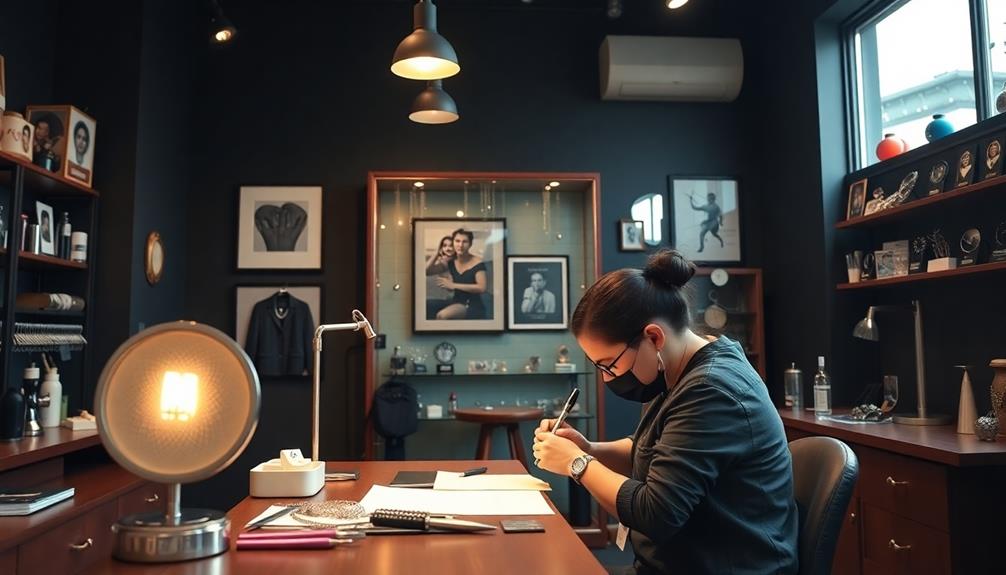
In the 1980s, a transformation in the world of body modifications began with the rise of professional piercing shops, offering a hygienic and specialized alternative to traditional piercing methods. These shops gained traction as they adhered to strict hygiene standards, setting themselves apart from home piercing practices that often used unsterilized equipment.
By the 1990s, societal reservations about piercings faded, leading to broader acceptance of various body modifications in mainstream culture.
Professional piercing shops now utilize single-use, sterile needles instead of piercing guns, which can cause skin tearing and complications. This shift not only enhances the safety of ear piercings but also improves the overall experience for clients.
With trained piercers at the helm, you can expect a more personalized service, where your comfort and safety are prioritized.
The rise of these specialized shops has also led to a wider range of piercing options and techniques, allowing you to express your individuality through your ear piercings.
As you explore different styles, you can feel confident knowing that professional piercing shops provide a safe and artistic environment for your body modifications.
Types of Ear Piercings
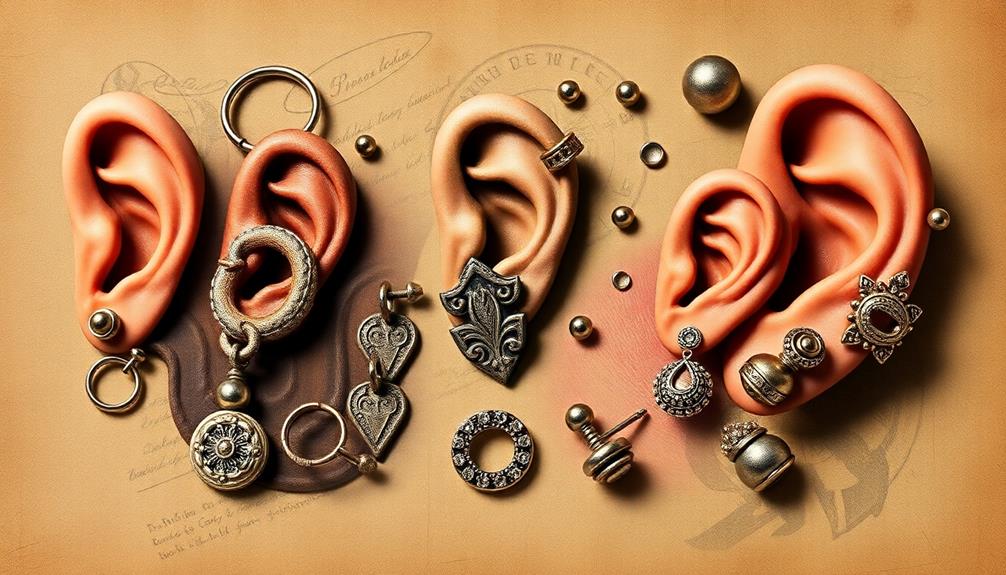
Ear piercings come in a variety of styles, each offering a unique way to express your individuality. When exploring the types of body piercings available, you'll find that they can be categorized mainly into lobe piercings and cartilage piercings.
Here are three popular types of ear piercings you might consider:
- Lobe Piercing: This is the most common type, known for its quick healing time and versatility. You can wear everything from studs to hoops.
- Cartilage Piercings: These include helix, tragus, conch, and daith piercings. Each offers a distinct look and can enhance your ear's natural shape.
- Industrial Piercing: This unique style features two holes connected by a single barbell, making it a popular choice for those wanting a bolder aesthetic.
As trends evolve, multiple piercings across different areas of the ear are gaining traction.
You might even join the growing community of individuals showcasing over 30 piercings, allowing you to curate your personal style.
With the rise of curated ear aesthetics, you can mix and match piercings, often adorned with charms or segment rings, for a cohesive and striking look.
Materials and Techniques Used
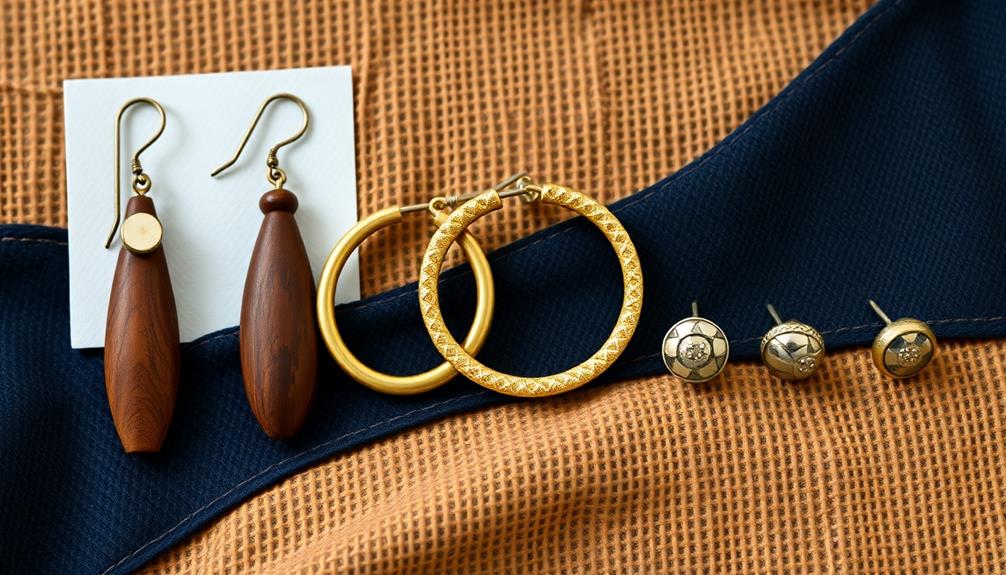
When choosing an ear piercing, the materials and techniques play a crucial role in both your comfort and the longevity of the jewelry. Today, many professionals opt for surgical steel (316L) for initial piercings due to its durability and hypoallergenic properties. This material minimizes the risk of allergic reactions, making it ideal for your sensitive skin.
In addition to surgical steel, you might encounter bioplast and titanium, which are also popular. These materials offer flexibility and comfort, reducing the likelihood of irritation.
Regarding techniques, professional piercers typically use sterilized needles instead of piercing guns. Needles provide a cleaner and less traumatic experience, greatly lowering the risk of skin tearing.
Hygiene is paramount in the piercing process; trained professionals adhere to strict sterilization protocols and utilize medical-grade equipment. This commitment to hygiene guarantees that the chances of infection are minimized, allowing you to enjoy your new piercing with confidence.
Choosing the right materials and techniques can greatly influence your overall experience, so it's important to prioritize quality and safety when you decide to get your ears pierced.
Aftercare and Maintenance Practices
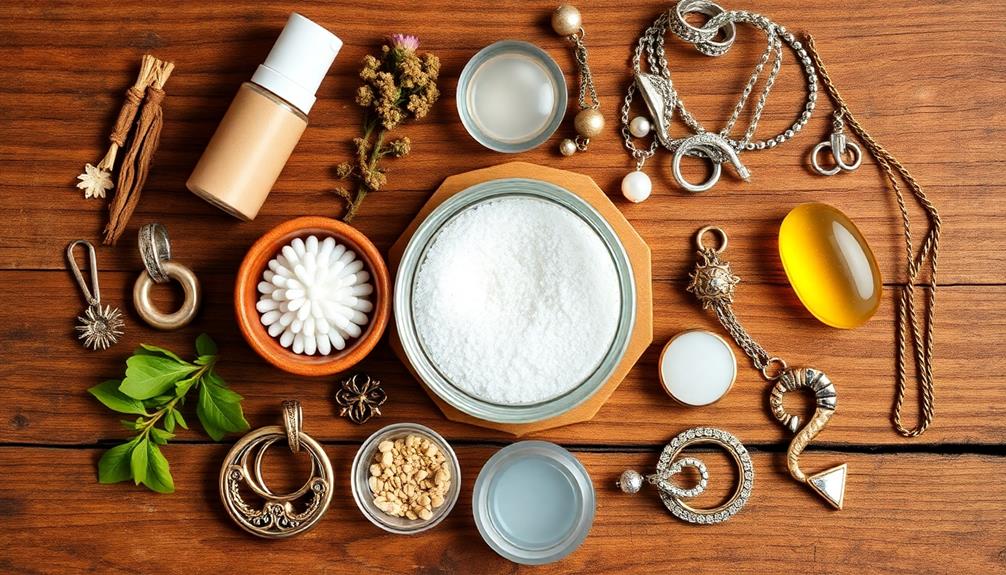
Caring for your ear piercings is essential to guarantee a smooth healing process and to prevent infections. Proper aftercare can greatly impact how well your piercing heals, so follow these key maintenance practices:
- Clean the Area: Use a saline solution to clean your piercing at least twice a day. This helps prevent infections and keeps the area free from bacteria.
- Avoid Swimming: Stay away from swimming pools and hot tubs during the healing process. For earlobe piercings, this usually lasts 4-6 weeks, while cartilage piercings can take 3 months or more to heal.
- Monitor for Infections: Keep an eye on your piercing for signs of infection, such as increased redness, swelling, or discharge.
If you notice any of these symptoms, seek medical attention promptly.
Contemporary Trends in Ear Piercing
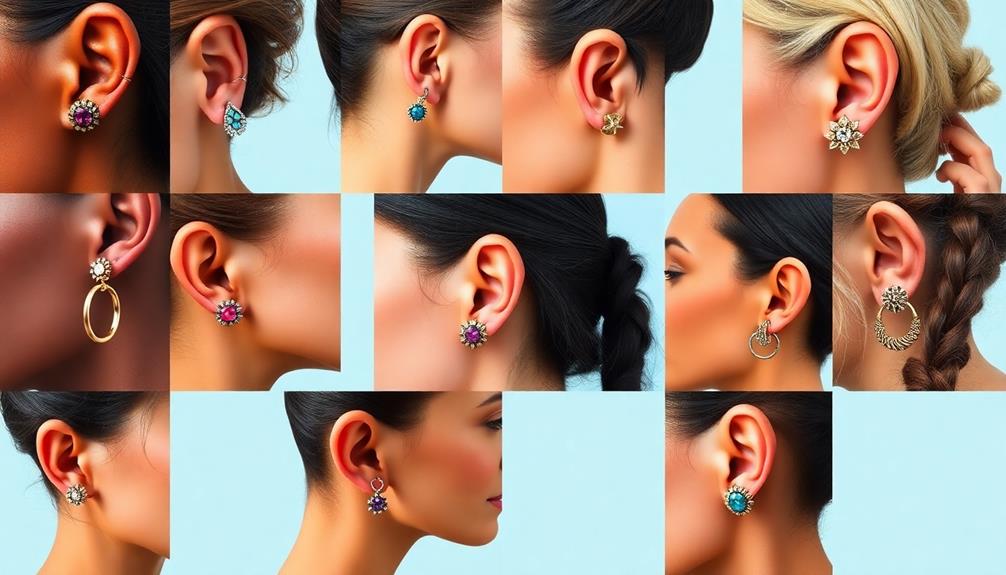
In recent years, contemporary trends in ear piercing have embraced a minimalist aesthetic, focusing on tiny stud earrings and delicate hoops that exude understated elegance.
You'll notice that many fashion-forward individuals are opting for curated ear aesthetics, which involve strategically placing multiple piercings to create a cohesive look. This trend allows you to express your personal style while showcasing your unique ear adornments.
Additionally, daith piercings have surged in popularity, with some claiming they offer potential benefits for migraine relief. This intersection of beauty and wellness reflects a broader trend where you can enjoy stylish piercings while also considering their health implications.
Social media platforms play a significant role in shaping these contemporary trends, inspiring you to experiment and explore diverse styles. Influencers and creators share their ear piercing journeys, encouraging you to embrace your individuality.
With the rise of medical piercing, conducted by trained healthcare professionals, you can also feel confident in the safety and hygiene of your ear adornments, minimizing the risk of infection.
As you navigate these trends, you'll find endless possibilities to express yourself through your ears.
Motivations Behind Ear Piercing
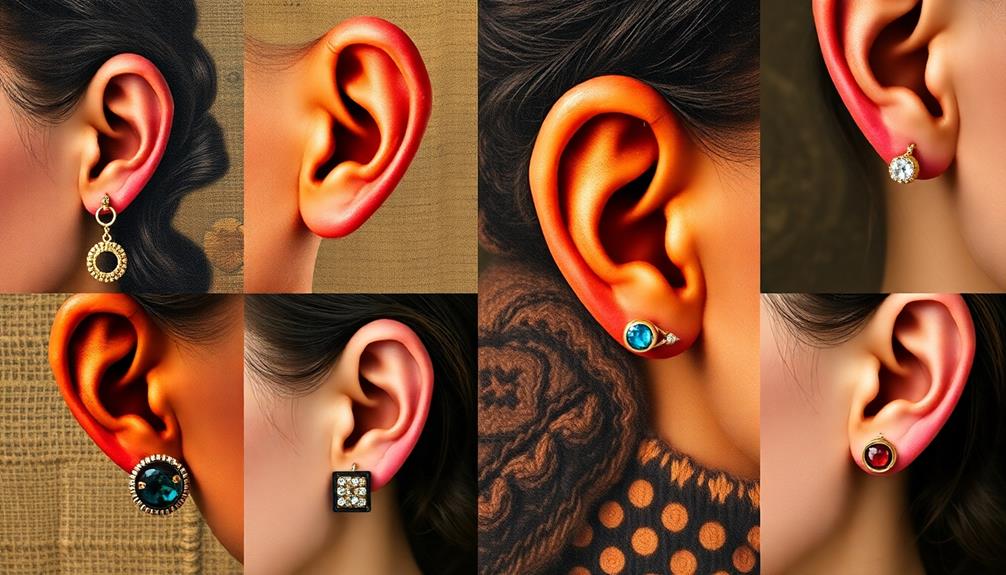
While motivations behind ear piercing have evolved over time, they often reflect a blend of cultural, social, and personal influences. Historically, ear piercings have served various purposes, from religious rituals in Mesoamerican cultures to rites of passage in tribal communities like the Maasai.
Today, the reasons for getting ear piercings have shifted markedly, emphasizing self-expression and personal choice.
Here are three key motivations for ear piercings today:
- Cultural Norms: In many societies, ear piercings symbolize important cultural beliefs and traditions, shaping how individuals perceive their identity.
- Self-Expression: Many people use ear piercings as a form of self-expression, showcasing their unique style and personality, whether through multiple piercings or distinct jewelry.
- Body Modification: The acceptance of body modification has grown, with ear piercings seen as a way to embrace individuality and challenge societal norms.
As you explore the motivations behind ear piercings, consider how these factors intertwine, reflecting both personal beliefs and broader cultural influences.
Ultimately, ear piercings have become a dynamic form of expression that transcends their historical roots.
Frequently Asked Questions
What Is the History of Ear Piercings?
Ear piercings have a rich history, reflecting cultural significance across civilizations. You'll find they symbolize wealth, status, and self-expression, evolving from ancient practices to modern trends, showcasing personal style and identity throughout the ages.
Did They Have Pierced Ears in the 1700S?
Imagine a sailor's adventurous spirit; yes, they did have pierced ears in the 1700s. While not widespread among women, men often donned earrings, symbolizing their journeys and status, blending practicality with style.
Did Medieval People Pierce Their Ears?
During the Medieval period, ear piercing wasn't common for most people. You'd find it among nobility for status or in cultures like the Vikings, where it symbolized bravery. Overall, it faced significant societal scrutiny.
What Is the Ancient History of Earrings?
Earrings trace back thousands of years, often symbolizing wealth or status. You'd find them in ancient Egypt, crafted from gold, or in tribal cultures, marking important life changes and expressing personal identity.
Conclusion
So, whether you're rocking a classic lobe piercing or flaunting a trendy helix, just remember: your ears are basically the fashion billboards of your personality. From ancient warriors to modern-day influencers, everyone's been poking holes in their ears for centuries—because why not? After all, if it's not adorned with some shiny metal or colorful gem, are you even trying? Embrace the evolution of ear piercings; after all, who doesn't want their ears to have a more exciting history than they do?

